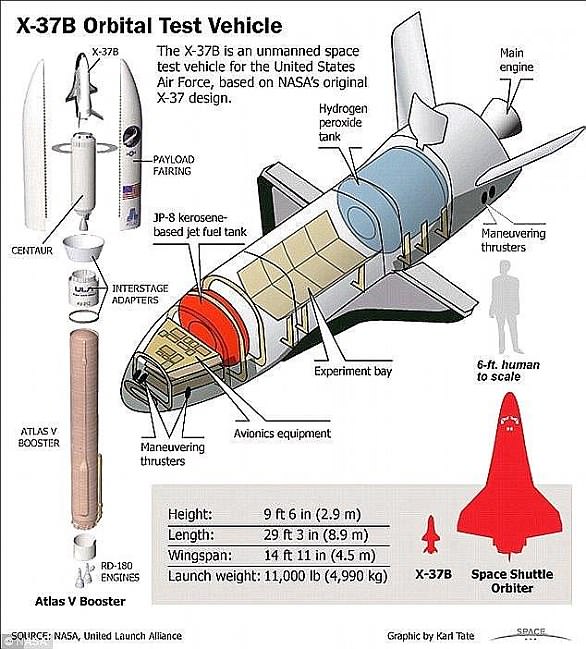The NEW space race: China launches top-secret military plane into orbit just one day after US’ delayed mystery launch – and Space Force chief says timing is ‘no coincidence’
China successfully launched its top-secret, unmanned spacecraft on Thursday evening, which the commander of the US Space Force said was “no coincidence.”
The United States had planned to launch its “spying” plan on Wednesday, but the mission was postponed due to technical problems.
“It's probably not a coincidence that they're trying to match us in timing and sequencing,” said Gen. Chance Saltzman, the Space Force's chief of space operations.
An announcement in the Chinese press described the spaceplane's purpose as providing “technical support for the peaceful use of space” — but the country kept the details secret, as American officials did about their craft.
China successfully launched its top-secret unmanned spacecraft – the Asian superpower's answer to the US Space Force's secret unmanned X-37B spacecraft – into orbit for the third time last Thursday. Its purpose: “Technical support for the peaceful use of space”
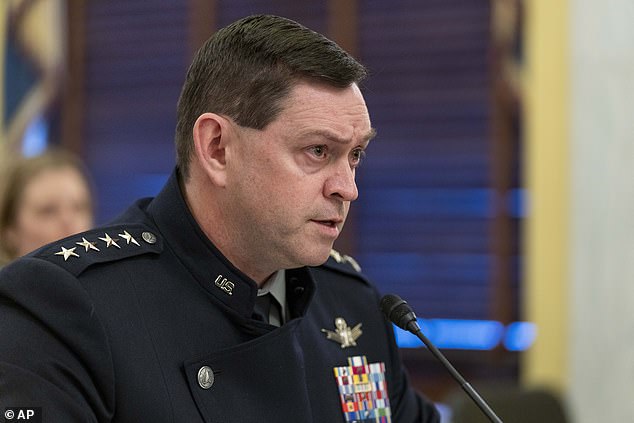
But the current head of space operations for the US Space Force, General Chance Saltzman (above), told reporters that the timing appears to be related to the cancellation of America's plan to relaunch the X-37B into space for another secret mission last Monday.
“Those are the two most frequently seen objects in orbit while they are in orbit,” Saltzman told reporters on Wednesday after a problem with a SpaceX rocket scuppered an X-37B launch scheduled for Monday.
Speaking at the Space Force Association's Space Force Conference in Orlando, General Saltzman emphasized the sophistication of unmanned, reusable orbital spy vehicles, which can provide greater operational security than spy satellites.
“Being able to put something into orbit, do a few things, bring it home and look at the results is powerful,” Saltzman said.
“It is not surprising that the Chinese are very interested in our space plane,” he said. “And we are very interested in them.”
However – despite years of promotional images of the secret US Boeing-designed X-37B spacecraft – no images of its Chinese rival have leaked to the public.
The closest media has come to seeing the rover, dubbed the China Experimental Reusable Spacecraft, or CSSHQ, was likely footage of an exhibit at Henan Jiyuan No. 1 Middle School in China in August of 2022.
A video of the exhibit, an outdoor view of the wrecked Long March 2F rocket responsible for launching CSSHQ into orbit, has been released. Aviation industry observers For clues about her secret one-time spy payload.
Images of Long March 2F missile debris, recovered from CSSHQ's second launch, fueled rumors that the missile's payload capacity of about eight metric tons indicates CSSHQ is similar in size to the X-37B, according to Space news.
the video It first appeared on Chinese social media site Sina Weibo, then TikTok, YouTube, and X.
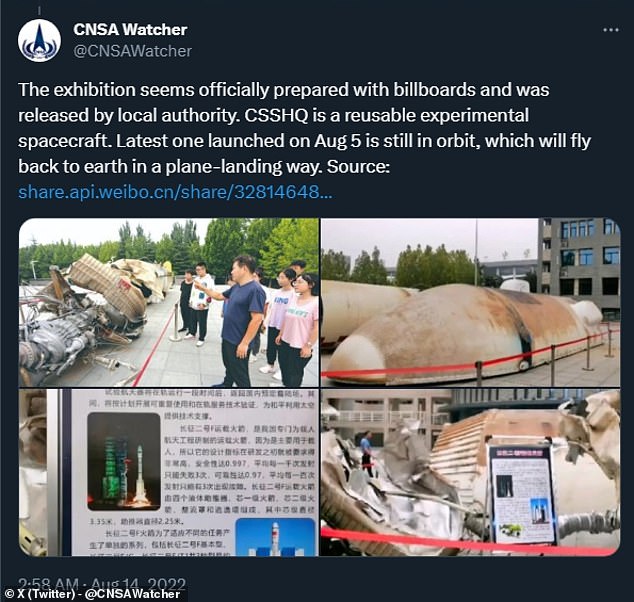
The closest media outlets have come to seeing China's secret spacecraft, dubbed the China Reusable Experimental Spacecraft, or CSSHQ, has likely come from footage of an exhibition at a middle school in China in 2022 — first posted on Chinese social media site Sina Weibo. , then X (up)
CSSHQ's launch on Thursday follows its last secret mission seven months ago: a 276-day long operation that began on August 4, 2022.
In comparison, CSSHQ's first launch, in September 2020, lasted just two days.
According to a report by China's Xinhua News Agency, this third launch aims to conduct “verification of reusable technology” and “space science experiments” as part of “technical support for the peaceful use of space.”
Covered by a Long March 2F rocket, CSSHQ was launched at the Jiuquan Satellite Launch Center based in northwest China.
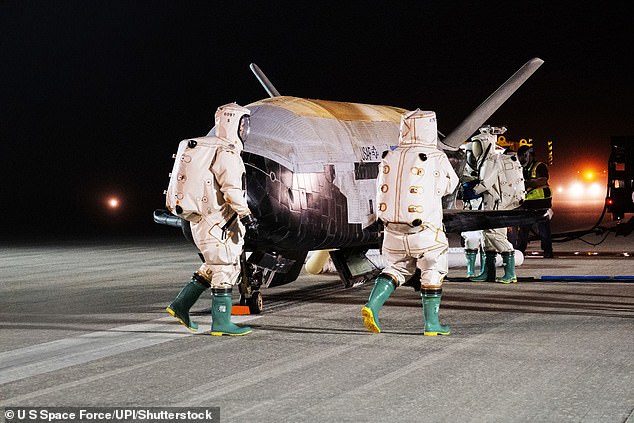
The US Space Force's X-37B “spy” space shuttle (above) was scheduled to be launched by SpaceX as part of a secret mission on Monday, but was forced to stop minutes before liftoff.
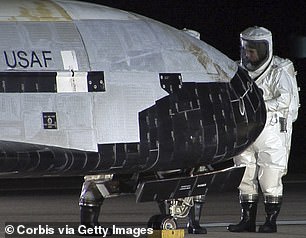
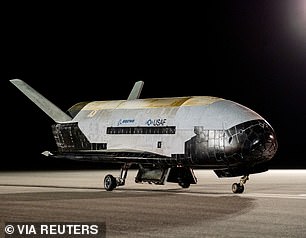
The X-37B, once a US Air Force project, could theoretically carry weapons into space, perhaps to defend US satellites against anti-satellite weapons. China and Russia accused the United States of using the plane as a bomber. The X-37B has been carrying out its secret missions since 2010
The original purpose of the Long March 2F rocket was to carry Chinese astronaut crews bound for Earth orbit, but the rocket has been modified to carry China's unmanned spacecraft as payload.
The X-37B was scheduled to be launched by SpaceX as part of a secret mission on Monday, but was forced to stop just minutes before liftoff.
Elon Musk's SpaceX Falcon Heavy rocket carrying the secret spacecraft was scheduled to lift off at 8:14 pm ET from NASA's Kennedy Space Center in Cape Canaveral, Florida.
But a “ground problem” was reported that led to the mission being canceled at the eleventh hour.
“Falcon Heavy launch has been halted tonight due to a groundside problem,” SpaceX said in a statement.
'The vehicle and cargo remain intact. The team is repositioning itself in preparation for the next launch opportunity for the USSF-52 mission, which won't be until tomorrow night.
Monday's mission was the X-37B's seventh classified mission since its debut in 2010, and most of the vehicle's payload is classified.
The X-37B could theoretically carry weapons into space, perhaps to defend US satellites against anti-satellite weapons.
While China and Russia have accused the United States of using the vehicle as a bomber, other experts have speculated that the space power vehicle is being used to carry out espionage missions: monitoring Chinese space operations or testing American reconnaissance systems.
(Tags for translation)dailymail

